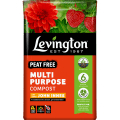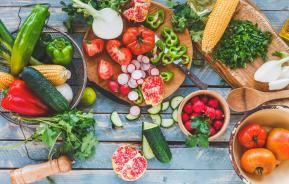Dill is a useful ad attractive annual or biennial herb, which is quite similar to fennel, although its aniseed/liquorice flavour is more subtle/delicate compared to fennel.
The ornamental, feathery dill leaves can be chopped into soups and salads, used to flavour rice and is the perfect accompanying flavour for fish dishes – particularly salmon and gravlax – and, of course, pickling with gherkins to make dill pickles.
The plants produce sprays of yellow flower in summer and the seeds can also be used in cooking. Grow dill in large containers or the middle of beds and borders where its feathery foliage forms an attractive foil for other plants.
How to grow dill
Cultivating dill
Dill needs a position in full sun. It grows best in a fertile, moist but well-drained soil. Dig in plenty of organic matter – such as garden compost, well-rotted manure or other soil improver – especially in very well-drained sandy soils to hold moisture.
Dill varieties
Although there are several different varieties, such as ‘Bouquet’ and ‘Dukat’, most supplies simply sell “dill seeds”.

Sowing dill
Dill seeds can be sown indoors from early April individually in cell trays or small pots at a temperature of 20°C (68°F), or outside where you want them to grow from May to July. Make regular sowings for a successional harvest and a long picking period.
Dill does not grow well when transplanted, so don’t try to prick out young seedlings.
Gradually acclimatise indoor sown plants to outdoor conditions for 7 to 10 days before planting outdoors when all risk of frost has passed.
Thin seedlings to or plant out at 30cm (12in) apart.
How to care for dill
It may be necessary to keep the soil moist by watering regularly, especially during prolonged dry periods in summer, but don’t overwater and allow plants to sit in very wet soil or compost.
Feed by applying a general granular plant food to the soil when sowing or planting out. Liquid feeds throughout the summer will help increase the amount of leaves produced and help keep the soil moist.
Plants may need support with bamboo canes or twiggy sticks in windy areas and gardens.
Removing developing flower heads will prolong the supply and flavour of the leaves. But the seeds themselves are also useful and can be used in cooking – especially as an ingredient in curry powder.
Being a biennial, plants will die back to ground level in winter. When this happens, tidy up the plants by cutting back flower stems and removing dead and dying foliage. Depending on the severity of the winter, and how well the soil is drained, they should come back for a second year. If not, just sow some more!
Harvesting dill
Dill leaves can be harvested at any time they are available, as soon as the plants have a minimum of 4 to 5 leaves. Pinch off the leaves or cut them off with scissors.
Picking the leaves regularly will help keep plants producing lots of fresh leaves and delay flowering. They can be used fresh or frozen or dried for used over winter.
For dill seeds, allow the flowers to fade and harvest once the seed heads have fully ripened and the seeds have turned brown. Seeds can be used fresh or dried for winter use.
| Flowering season(s) | Summer |
|---|---|
| Foliage season(s) | Spring, Summer, Autumn |
| Sunlight | Full sun |
| Soil type | Chalky, Clay, Loamy, Sandy |
| Soil pH | Neutral |
| Soil moisture | Moist but well-drained |
| Ultimate height | 90cm (3ft) |
| Ultimate spread | 30cm (12in) |
| Time to ultimate height | 3-4 months |








